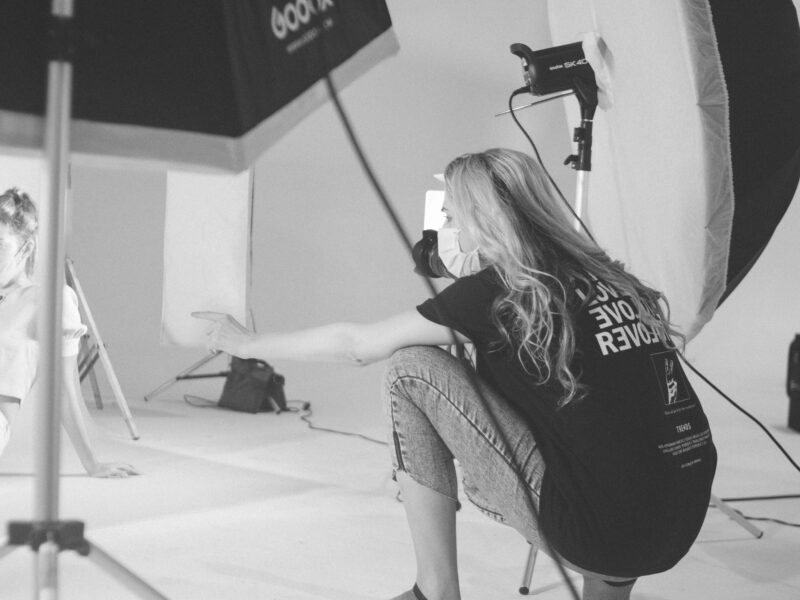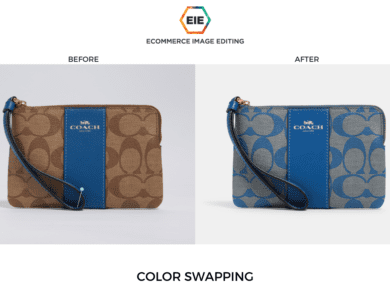
A Glimpse into the World of Lenses.
Introduction
A camera without a lens is useless for a photographer and finding the right kind of lens for a camera can vastly improve the overall production. If described in technical terms, a camera lens is an optical body that features a single lens or an assembly of lenses that mounts onto a camera’s body. Some lenses are interchangeable, while others are built into the construction of the camera body.
Modern lenses attempt to set the angle of incidence and angle of refraction to equal values to decrease the amount of aberration, and feature a focus element that allows the operator to dictate which portions of the image are acceptably sharp, and which portions are blurred.
There are different types of camera lenses available in the market. Choosing the right type of camera lens depends upon the photographer according to the kind of photography genre they want to indulge in. So below I have mentioned various kinds of camera lenses and their purpose classified as per the photography genre.
Basic types of camera lens used for various photography genres
Camera lenses come in either fixed (prime) focal lengths, or zooms, which cover a range of focal lengths. The different focal lengths are grouped into categories for different types of lenses. Thus it is crucial to understand the various functions of every lens and the kind of photography genre they are used in.
- Wide Angle Lenses
Traditionally, a super wide-angle lens is classified as anything under 20mm. Wide-angle is 21-35mm. With the advent of digital cameras, and the APS-C format, camera manufacturers have also started producing specific lenses for this format. Wide-angle lenses for crop frame DSLRs range from 10-24mm, with a few going down to a super wide 8mm.

Usage:- Wide-angle lenses are most commonly used for photographing landscapes and architecture, although they are often also used for photographing large groups of people.
2. Standard Lenses
A standard lens has a focal length range of 35-70mm. The most common standard lens is a fixed 50mm lens.

Usage:- Standard lenses are most commonly used for documentary and street photography, where photographers need to move quickly and capture an interesting point of action. Pioneers of modern street photography, such as Henri Cartier-Bresson, always used a 50mm lens, choosing to move themselves around, so as to best frame an image.
3. Medium Telephoto Lenses
The focal range between 80-135mm is nearly always used by portrait photographers. Fixed lenses at these lengths produce ideal framing for head and shoulders shots. The Canon EF 100mm F/2.8 Macro USM lens is an example of one of these types of lenses.

Usage:- Although portraits can be clicked from any camera lens be it prime lens, a zoom, a telephoto, or even a kit lens. But medium telephoto lenses are mostly used by professional photographers especially to capture portraits.
4. Telephoto Lenses
Any lens with a focal length of between 135mm and 300mm is a true telephoto lens. Manufacturers make a wide array of lenses in this classification, at an equally vast range of prices! One example of a telephoto lens is the Canon EF 200mm f/2L IS USM telephoto lens as shown below.

Usage:- Telephoto lenses are traditionally used for sports and wildlife photography, but their essential function is to bring distant objects closer.
5. Specialist Lenses
There are a variety of specialist lenses available. Some of the most common are:
Super Telephoto:- These have a focal length of more than 300mm, and are used by dedicated sports and wildlife photographers. The Nikon AF-S Nikkor 400mm f/2.8G super telephoto lens is an example.
Macro:- These lenses are able to focus closer to an object than normal lenses, offering a 1:1 ratio. They are used for still-life photography of small objects.
Fisheye:- These are on the edge of wide-angle lenses, and give a distorted view of the subject matter. The center of the image is magnified, and objects diminish in size in all directions around it.
Camera Lenses are a big investment and are delicate pieces to handle. There are several elements in the environment that can become a cause/ reason for your lens’ destruction. Lenses are used by photographers for various assignments, so if you don’t know how to take care of them, they’ll soon become useless. Thus it becomes very important to take utmost care of them. Below we’ll simultaneously understand the factors that can destroy your camera lenses and also how can you protect them from those.
Camera Lens Care
1. Dirt
Dirt is a daily challenge for your lens. Dust and other dirt on the surface of your lens will create horrible images. One stray spec of dust is probably not going to be noticed but if your lens is obviously dusty it can cause problems. Dirt causes even more problems as it is more difficult to remove from your lens surface.
So in order to protect your lenses from elements like dirt, dust, smudges and fingerprints use a protective filter (UV) which will act as a shield for the lens. The filter also shields lenses from weather-related elements.
2. Removing Dust and Dirt
For dust and lint, a simple microfiber lens cloth will remove the problem. Simply use light strokes working towards the outside of the lens. For mud or other stubborn dirt, you will need to use a cleaning solution designed for photographic lenses.
If you use ammonia or another household cleaning solution you could permanently damage the lens. Most photographic lenses have a fine coat of oil on their surfaces. Eventually, this coating will wear off with repeated cleanings of any kind. Using a filter will help prolong the life of your lens.
3. Scratches
Scratches are a killer of your lens. There is no good way to repair them yourself. The best thing you can do is prevent scratches. The easiest thing you can do to protect your lens against scratches is to use a filter.
A filter is a small piece of glass that fits in front of your lens. The original purpose of filters was to change the look of an image. However, many people use a polarizing filter or a UV filter as protection for their lenses. These filters have mild effects and are useful for general photography. Keep in mind that you are putting a relatively inexpensive piece of glass on a rather expensive piece of glass. Use high quality filters to avoid compromising your lens quality.
4. Shock
Shock is when your camera lens is hit or hits something else with considerable force. If you drop your lens or if someone slams a car door on your lens it will probably cause damage. Sometimes this damage can be repaired by a professional repair shop but it is almost always very expensive.
The best way to protect your lens is to carry it in a padded camera bag, and to be aware of your surroundings. If you have your lens (and camera) out of the bag, pay attention to what is around you and be prepared to move your camera, and yourself, out of harm’s way.
5. Water
Water is a mortal enemy to your lens. The electronic circuits and motors inside most of today’s lenses can be destroyed by water. If water gets on these internal lenses and dries, it leaves water spots that you cannot clean yourself. To protect your lens from water damage there are several things to remember.
If shooting in the rain, use a rain hood.
When moving between temperature extremes, carry your lens (and camera) in a camera bag before changing temperatures to help prevent condensation inside the lens. Once moved to the new temperature, slowly introduce the new air into the bag.
1. Be careful to avoid dropping your lens (and camera) into water.
2. If your camera lens does get water inside of it follow these steps.
a. Turn the lens so that the lens mount is down to help water drain from the lens.
b.Wrap the lens in a very absorbent towel.
c. Take the lens to the nearest professional repair shop immediately.
Taking care of your camera lenses will increase their value and durability. More importantly, it will help you come up with good quality photos that tell the stories you want the world to know.
So here are few steps for cleaning your lenses:-
- Release the lens gently. Depending on your camera type or brand, there might be a release button you can use for this function.
- Use your blower (in the lens care kit) and blow off all the dirt and dust on the lens.
- Use a cleaning tissue to apply lens fluid.
- Gently wipe the lens. Your direction should go toward the center of the lens.
- Slowly re-attach the lens. Put on the lens cap if you are not going to use the camera or lens after cleaning.
- Always use a UV filter in front of the lens to protect it from damage.
Conclusion
In conclusion, there are different types of camera lens for almost any situation you could find yourself in as a photographer. Knowing which lens is best for what scenario, will set you on your way to becoming a much-improved photographer and by taking good care of your lens and camera you are going to save a gargantuan amount of money.




